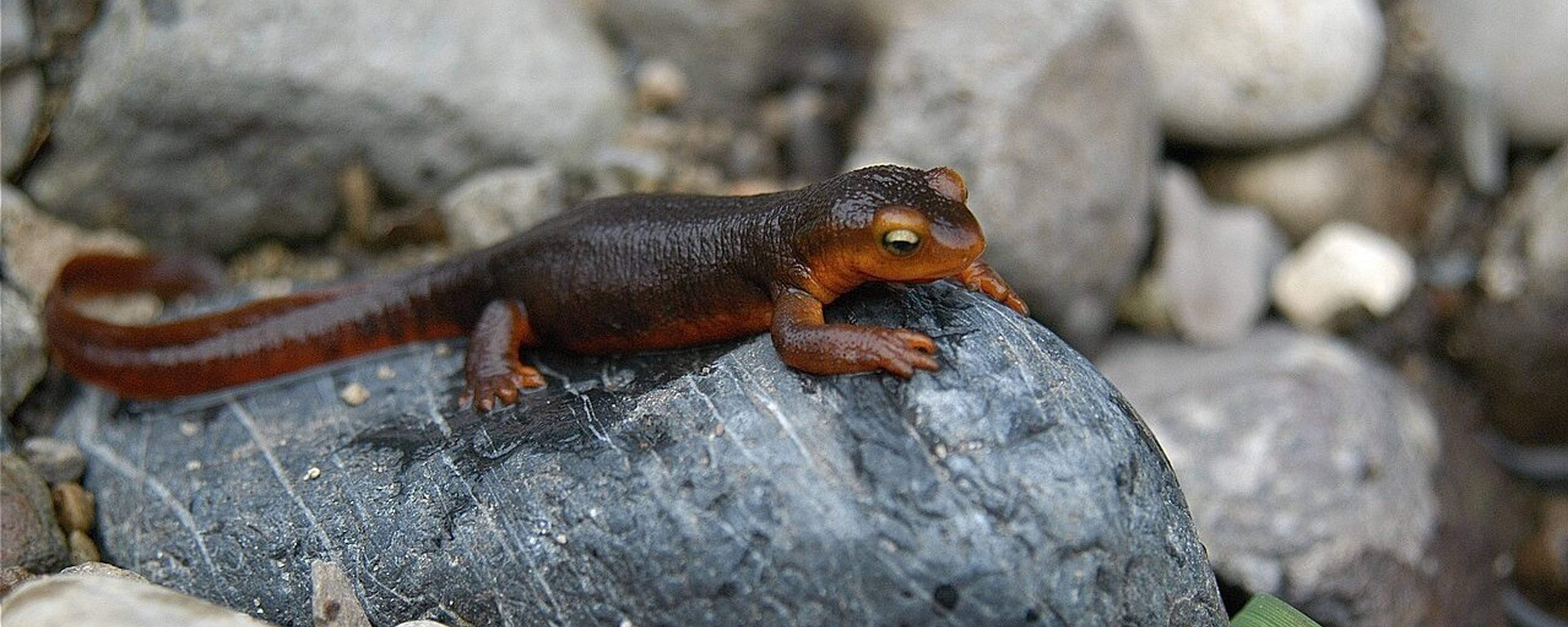Slippery Season
Mating and Migration on the Wet Trails of Santa Cruz County
SANTA CRUZ — Not to put too fine a point on it, but mating season gets pretty dirty for the salamanders of Santa Cruz County.
When the winter rains fall, and the ground gets all squooshy, and amphibian bodies begin to morph in their watery ways, they'll slither out of cracks in the muddy earth and begin their annual migration to the nearest creek or pond.
If amphibians are your thing, and voyeurism doesn't scare you off, right now's the best time of the year to see the bulging eyes and slender bodies of local salamanders on the move, and at Rancho del Oso-Big Basin State Park they're making a whole day out of it.
Salamander Saturday — featuring salamander talks, salamander walks, salamander arts and crafts and the salamanders themselves — takes place noon to 4 p.m. Saturday. It's one of those rare outdoor events where rain does not cancel the festivities, as it only makes the slippery route to the mating grounds all that more inviting.
Wear sturdy boots, if you have them, and pack a raincoat and rain pants if the sky's looking gray.
"It's rather fun to tread carefully along the squishy trails while we investigate fallen logs and soggy leaves for evidence of salamanders," said Jeremy Lin, program coordinator at Rancho del Oso.
The three-quarter-mile, ranger-led hike on Hoover Nature Trail begins at 3 p.m., looping through the world's largest native stand of Monterey pines and offering grand views of the Pacific Ocean. The loop includes mixed conifer forest, mushrooms popping up like mushrooms and banana slugs, squirrels and chipmunks bewildered by all the people in their backyard.
Last year, nearly 100 people attended Salamander Saturday. Amy Patten, a herpetologist with the Ventana Wilderness Alliance, will present a lecture on the natural history of salamanders in the Santa Cruz Mountains. Live salamanders in tanks will be on display, and "salamander people" will be available to answer your amphibious questions, she said.
"Last year the kids got to see a Giant California Salamander eat a banana slug. They loved it," said Patten, who advocates for amphibious habitats throughout the state. "It was like someone scoring a goal at a sporting match — the crowd went wild."
"The Giant Salamander (which grows to 12 inches) eats all sorts of ridiculous things. They've been documented eating rats, mice, banana slugs, fish — they're basically capable of eating anything that fits in their mouths. It's impressive," Patten said.
Rancho del Oso is also crawling with Rough-Skinned Newts, one of the most dedicated migrating salamanders in these parts. They'll travel two miles or more to reach a pond or stream — leaving at the first sign of rain — and then hang out all season for the chance to mate, Patten said. When a female comes their way, the two will embrace in a passionate salamander hug (scientists dryly call this courtship ritual "amplexus"); if the female senses something good in his pheromones, she'll likely mate with him, laying eggs in clusters of seven to 47 and attaching them to underwater vegetation, rocks and sticks.
Rancho del Oso is home to several species of salamander, including the California and Rough-Skinned Newt, the Slender Salamander, the Arboreal Salamander and the Ensatina Salamander.
The Santa Cruz Black Salamander — a subspecies that is solid black with a few white specks — will likely be elevated soon into its own species by herpetologists, Patten said.
The Santa Cruz Long-Toed Salamander, which lives in Aptos and Watsonville, is considered endangered.
"We do have a lot of amphibians that are declining all over the world for various reasons, (often) through habitat loss," Patten said. "So it's really important for people to learn about species that live in their own backyard to understand how important they are and what role they play in our ecosystem."
← Return to stories about migration, habitat and care.